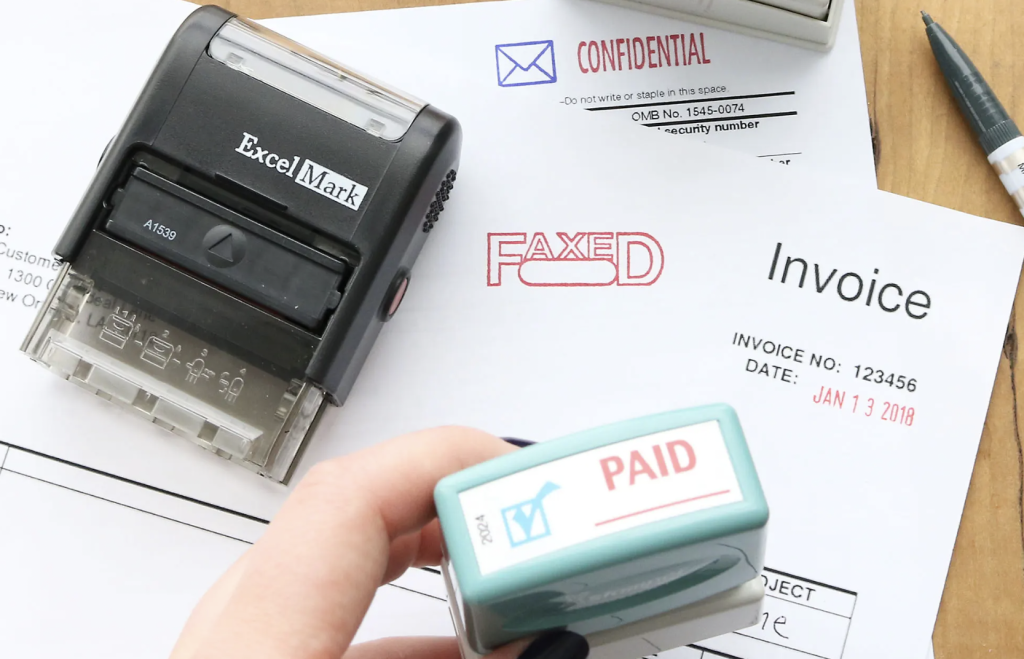Stamp pads can make all the difference in the world when it comes to stamping your handmade cards, thank you notes, party invitations, and more! To get the best results and to make stamping as simple as possible, you’ll want to invest in several different types of stamp pads, each of which comes with its own set of pros and cons (and its own set of colors!). Here are six types of stamp pads you should have on hand in your collection.
1. Multisurface Stamp Pads
Multisurface stamp pads are versatile pads that you can use on paper, plastic, metal, and glass– making them perfect for a wide range of projects. They’re also acid-free and fast-drying, so you won’t have to worry about smudging or smearing. Plus, they work well with water-based inks. And since there’s no risk of transferring the ink onto your hands, you’ll never get stained! They can leave a lasting impression on different surfaces such as metals, plastic, glass, etc.
A multisurface pad is ideal for use with water-based inks because it dries quickly, which prevents you from getting stains on your hands when using this type of ink. When working with a multisurface pad, you should permanently seal off any openings at the top of the container by pressing firmly on the lid each time you remove it. Otherwise, air will flow into the container, making your ink dry out faster. You can check here for fantastic customized stamps models that ensure the endorsed information’s excellent visibility.
2. Tattoo Stamp Pads
Tattoo stamp pads are often used for tattooing the skin with henna and other temporary tattoos. They are also helpful in sealing envelopes to keep them from sticking to each other or the recipient’s hands. The adhesives in these stamps help them adhere well to surfaces such as paper, plastic, metal, and glass. They are suitable for various objects, including letterheads, greeting cards, and gift tags. The most popular type of ink in this type of pad is water-based ink which dries quickly on the surface and is easy to remove with soap and water without damaging the surface underneath.
Another benefit to using this type of pad is that it won’t smudge if you accidentally touch it before it’s dry because it sets almost instantly. After waiting a few seconds for the image to transfer onto your object, you gently pull away and admire your finished product! If you want to make changes after transferring an image, place the design back down and run over it again. To clean your stamp pad, dab some soapy water onto it and wipe off any remaining ink.
3. StazOn Stamp Pads
StazOn is a solvent-based ink pad that works great on non-porous surfaces like plastic, metal, and glass. The ink is also waterproof, making it perfect for outdoor projects. This type of pad comes in various colors to find the ideal shade for your project. The most common drawback to this product is that the ink doesn’t always stamp clear onto porous materials such as paper or fabric.
However, if you’re looking for a way to stamp something outdoors, StazOn is the way to go! It’s even available in an array of colors, so finding one that matches your needs should be no problem.
4. Artline Quick Dry Pads
These pads are great for those who want to do some quick stamping without having to wait for the ink to dry. They are also acid-free and non-toxic, making them safe for use on all types of paper. They are suitable for marking CDs, glossy surfaces, leather, metal, and many other materials. The Artline Quick Dry Pads come in three colors: red, blue, and black.
The pads have a high-density foam applicator that applies the perfect amount of ink onto your stamp, so you don’t have to worry about overdoing it or getting a blob of ink from pressing too hard. And when you’re through with one pad, it’s easy to clean off your rubber stamp with water so you can start using another color.
5. Cosco Replacement Pads
As the name suggests, these are replacement pads for your existing Cosco stamp pad. They come in various colors, so you can find one that matches your decor or style. They’re also super affordable, making them a great option if you’re on a budget. It’s an excellent way to go if you’re looking to get into stamping but don’t want to spend too much money.
Plus, they have no drying time and come with an easy-to-grip handle, which is perfect for beginners! These are suitable for anyone who wants to try stamping without investing much money upfront.
Conclusion
There are different types of stamp pads that you may need in your collection for business purposes. They are water-based, oil-based, pigment-based, dye-based, acid-free, and archival. Each type has unique properties that make it ideal for different projects. Water-based ink is the most versatile and can be helpful on various surfaces. Oil-based ink is perfect for projects that require intense color and long-lasting wear, while pigment-based ink provides clean lines and precise detail. Acid-free stamp pads are great for preserving documents as they don’t rust paper like other types of ink will. Having a collection of different stamp pads will help you achieve professional results no matter what project you’re working on. Experimenting with several of these options will allow you to find which suits your needs best so you can use them to their full potential!




